By TVR Staff
February 2018
Bird watching has been a popular pastime among those in North America for more than a century now, and even today, birding seems to be experiencing a sort of renaissance. Bird enthusiasts can take multi-day birding tours to the remotest parts of the world, websites and online forums keep track of just about every rare sighting, while no fewer than four birding magazines can be found on the shelves of your local bookstore.
Of course, one need not join an organized tour or spend thousands of dollars on specialized birding equipment in order to enjoy spotting birds. As North Americans, we happen to have the advantage of living in one of the richest wildlife regions in the world. More than 1,100 bird species live in Mexico alone, while 914 species and 640 species live in the United States and Canada, respectively. Anyone can enjoy birding, and that’s why we set out to find the 30 best places for bird watchers in North America.
Methodology:
Though there are certainly more than 30 excellent destinations for viewing birds, we chose the following places based on the following:
Accessibility: Each of the following destinations is open to the public and easily accessed.
Environmentally Responsible: There is a reason so many national parks and private reserves top our list. We chose only those places which endeavor to protect the world’s bird populations.
Abundance of birds: With few noted exceptions, we chose birding destinations known for an abundance of bird species. Many of our listed places are spots on migratory paths, and/or are popular breeding grounds. We want bird enthusiasts to see as many birds as possible if they choose to visit a place we’ve recommended!
Acadia National Park
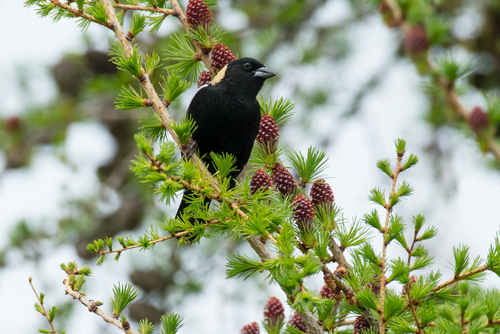
When to Go: Year Round
There are a million reasons to make a trip to Acadia National Park, but for bird watchers, some of those reasons include such birds as Atlantic puffins, bobolinks (pictured), and black guillemots. For the best bird viewing, we suggest heading straight for the section of the Park known as Mount Desert Island. Thanks to its variety of habitats and convenient location along a number of migration routes, the Island is one of the best places in the world to spot such birds as bald eagles and warblers. If possible, plan to visit Mount Desert Island in June, when the Acadia Bird Festival is attended by passionate birders from all over the world.
Aransas National Wildlife Refuge, Texas
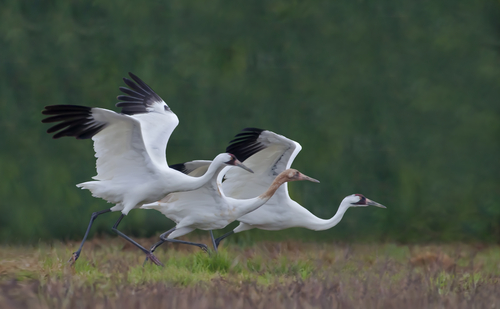
When to Go: Mid-October through Early April
There is no other birding destination on our list quite like Aransas National Wildlife Refuge in Port Lavaca, Texas. While other featured destinations were chosen based on having large numbers of bird species, Aransas was chosen because it is the winter home to one particularly famous, but critically endangered bird: the whooping crane (pictured). Only about 250 whooping cranes are left in the entire world, and about half of them can be found right here between the months of October and April. The 5,000-acre wildlife refuge is easily explored by car and/or foot, though to get anywhere near the cranes, you’ll have to join one of five possible boat tours. Besides the whooping cranes, herons, egrets, and terns are also frequently spotted.
Baie-du-Fevre, Quebec
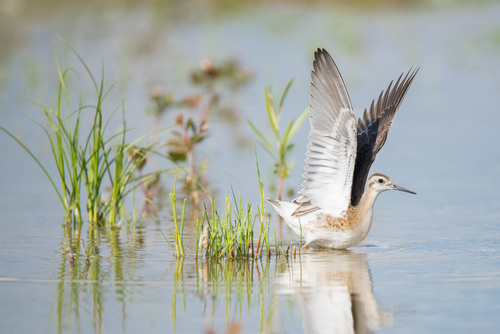
When to Go: Late April through Early May
Despite its extremely short peak birding season, Baie-du-Fevre doesn’t disappoint when it comes to spotting rare and exciting bird life. Situated along the shores of Lake Saint-Pierre, Baie-du-Fevre is a haven for wood ducks, snow geese, ruddy ducks, short-eared owls, Wilson’s phalarope, and black terns. And because Baie-du-Fevre is located only about an hour-and-a-half drive from Montreal, it’s a convenient birding destination at which to spend a whole day or only a few hours.
Blackwater National Wildlife Refuge, Maryland
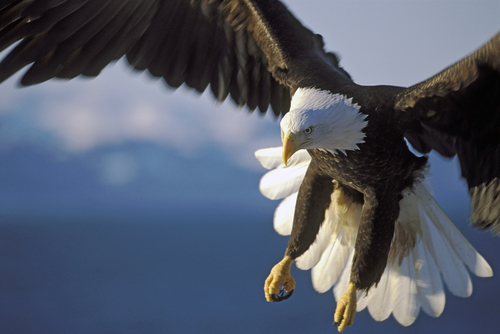
When to Go: Spring and Fall
The lush environment that is Blackwater National Wildlife Refuge is a top place for bird watching year-round, but ask any Blackwater regular and they’ll likely suggest timing your visit in the spring or fall. This is because the refuge was originally founded as a resting place for ducks, geese, and other migratory birds. Black ducks, teal, pintails, and wigeon are commonly sighted in the marshy forest environment, as are owls, ospreys, warblers, wild turkeys, woodpeckers, orioles, flycatchers, and many more. Interestingly, Blackwater National Wildlife Refuge is also home to the greatest density of nesting bald eagles (pictured) on the East Coast.
Bosque del Apache National Wildlife Refuge, New Mexico
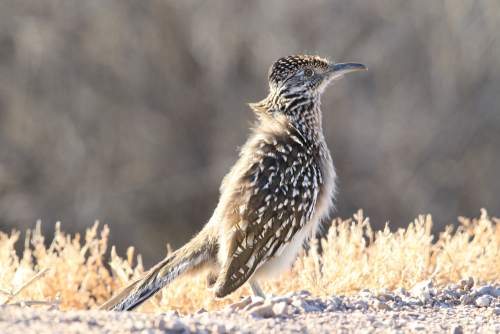
When to Go: November
Just as human snow birds head south to places like New Mexico, so too do a number of bird species. This stunning natural environment is a favorite resting spot for such migratory birds as sandhill cranes, ducks, geese, pheasants, roadrunners (pictured), and Gambel’s quail. Check the refuge’s website for the dates of the annual four-day festival which celebrates the birds’ yearly migration. But even if you’re not able to visit New Mexico during November, Bosque del Apache is still one of the top places in North America for bird watchers. More than 300 species of birds call the refuge home. Songbirds appear just about anywhere one looks, while bald eagles, hawks, northern harriers, and other birds of prey can often be seen mid-hunt.
Cape May Point, New Jersey
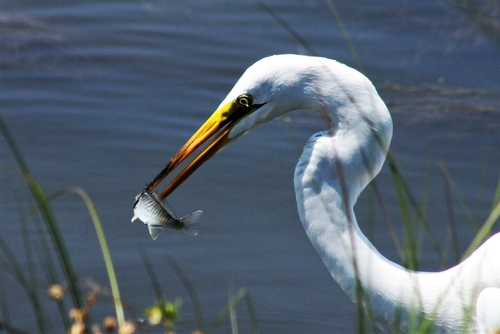
When to Go: Year Round
Cape May, New Jersey is a frequent addition to “best of” lists in just about any category, and now we’re officially adding this great go-to to our list of the very best places in North America for bird watchers. Cape May, and specifically its southernmost “Point,” are popular resting spots for a variety of migratory birds. Though you’re likely to see myriad birds at Cape May Point at any time of year, the Cape May Bird Observatory has put together a handy reference for the best times of year to see certain species. For example, large flocks and smaller birds such as northern flickers, swallows, and bobolinks are most easily spotted from about mid-August to November, while falcons, ospreys, and hawks are best viewed during September and October. Spring and summer, on the other hand, are the best times to visit for water birds such as egrets (pictured) and herons.
Cape St. Mary’s Seabird Sanctuary, Newfoundland & Labrador
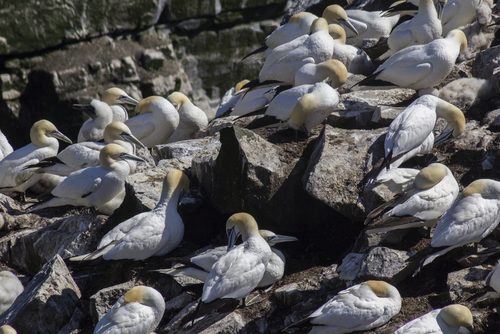
When to Go: Mid-June through Late July
Newfoundland & Labrador has long been known as one of the best places in the world to view birds. An especially awesome birding destination is Cape St. Mary’s Seabird Sanctuary. Easily accessed and located only about two driving hours from St. John’s, the sanctuary is famous for the thousands of seabirds that choose to nest here during the summer months. Northern gannet (pictured), thick-billed murre, whimbrel, lesser golden plover, and black-legged kittiwake are just some of the species that can be found building nests and hatching their young on the aptly named Bird Island, while willow ptarmigans are often easily spotted among the sanctuary’s bogs and fens.
Cave Creek Canyon, Arizona
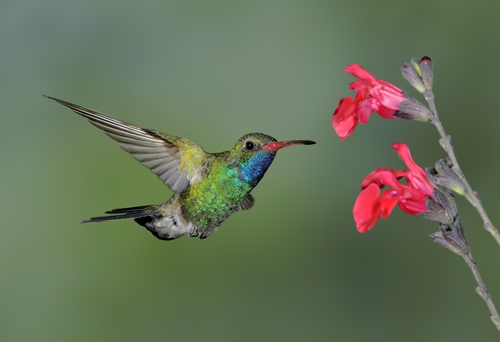
When to Go: Year Round
Of the many good bird watching spots in Arizona, Cave Creek Canyon in the Chiricahua Mountains is definitely one of the best. More than 375 different types of birds call Cave Creek Canyon home, including Gambel’s quail, cactus wren, curve-billed thrashers, trogons, screech owls, and golden eagles, to name but a few. Most bird watchers who come to Cave Creek Canyon are especially interested in hummingbirds (pictured), as nearly every Arizona-endemic type of hummingbird can be spotted here.
Celestún Biosphere Reserve, Yucatan
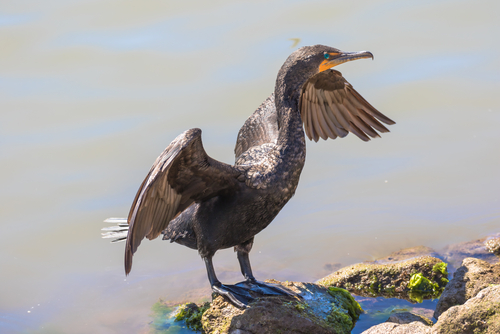
When to Go: Winter
Like nearby Rio Lagartos, which also makes our list of the best bird watching destinations in North America, Celestún Biosphere Reserve in the Yucatan is world-famous among serious birders. During the winter months, upwards of 18,000 pink flamingos (not to mention some heron, cormorants (pictured), pelicans, great egrets, warblers, and sandpipers) find their way to this marshy paradise. Because the reserve is protected, the only option visitors have of getting up close to the birds is via a boat tour through the mangroves to the reserve’s Bird Island, where most of the birds can be found.
Dauphin Island, Alabama
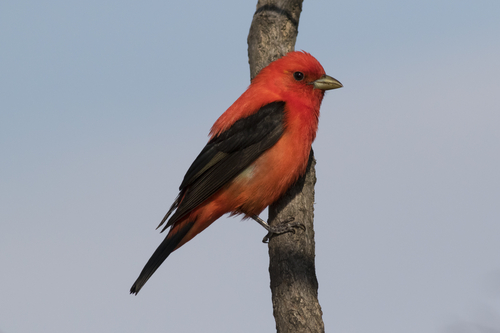
When to Go: April and May
Alabama’s Dauphin Island is one of two spots along the Gulf Coast to make our list of the best birding places in North America. Tanagers (pictured), warblers, and other small migrating birds stop to rest on Dauphin Island during the months of April and May, as they make their way back from winters spent in Mexico and other warm, tropical lands. Other birds, however, are easily spotted throughout the year, especially among the lagoons of the 164-acre Audubon Bird Sanctuary, a fantastic birding organization which also provides visitors with helpful maps detailing the best trails for viewing birds.
Everglades National Park, Florida
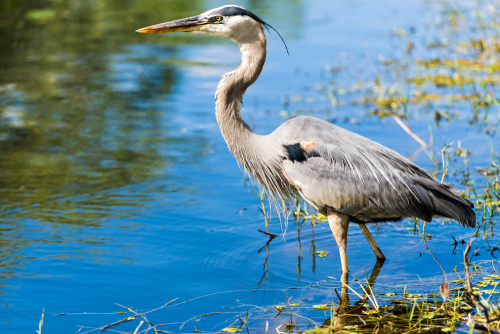
When to Go: December to March
The alligators may get all the attention, but if you ask us, the true stars of Everglades National Park are the birds. More than 300 unique bird species can be found living in this famous habitat. The marshy environment is often dotted with heron (pictured), white ibis, water turkeys, and other shorebird species, while other birds like the roseate spoonbill, snake birds, owls, and hawks can often be spotted hunting. Though Everglades, one of America’s biggest and most popular national parks, is great to visit at any time of year, most serious bird watchers choose to visit between December and March, when the park’s birds are most active.
Forillon National Park, Quebec
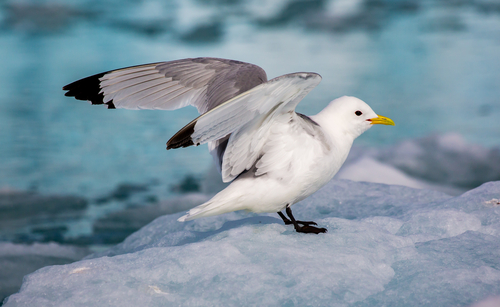
When to Go: Year Round
Despite its relatively small total area (it’s a 245-square kilometer peninsula), Forillon National Park boasts a hugely diverse collection of habitats: marshes, lakes, rivers, seashore, cliffs, and forests. This is almost certainly why the park also boasts more than 253 species of birds, including seven different types of nesting birds (including the largest colony of black-legged kittiwakes, pictured, in eastern Canada), myriad raptor species (like the northern harrier, bald eagle, and American kestrel), lots of ducks (teal, scoter, eider, and more), and various forest birds (such as warblers and woodpeckers).
Fundy National Park, New Brunswick
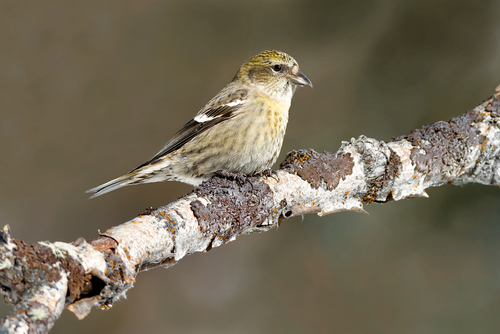
When to Go: Spring
Between the Bay of Fundy and the Caledonia Highlands plateau, Fundy National Park makes for the perfect environment for nearly 260 unique bird species. An exciting number of birds can be spotted here at just about any time of year, but a trip in the summer usually means seeing all of the additional migratory birds who stop here to rest. These include more than 10 types of warblers, plus juncos, white-winged crossbills (pictured), great blue herons, cormorants, and peregrine falcons, the latter of which have only recently been reintroduced to the national park. Also worth mentioning is the fact that in December, Fundy National Park participates in the Christmas bird count, and visitors can team up with professional ornithologists to participate.
Georgian Bay Islands National Park, Ontario
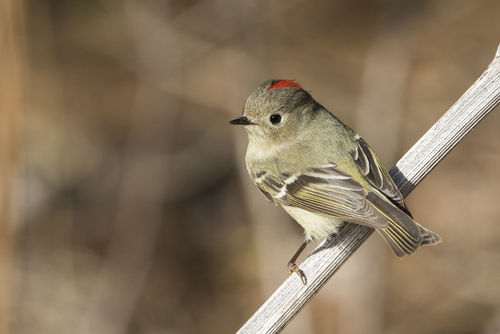
When to Go: Spring and Fall
Ontario’s Georgian Bay Islands National Park is home to what many in the birding community consider to be the Great Migration of the winged world. Every year, during the spring and fall, thousands of birds migrate across the park by island hopping across the 63 islands. This unique experience makes for some excellent watching. For the best views and experience, we suggest hitting the trails on Beausoleil Island, the largest island in the national park. Birds commonly spotted here include warblers, kinglets, thrashers, sparrows, and vireos, among others.
Grand Isle, Louisiana
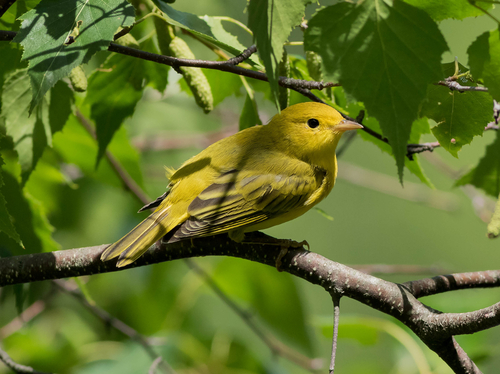
When to Go: Spring
Each spring, thousands of warblers (pictured) migrate north across the Gulf of Mexico to Grand Isle, Louisiana, where they rest among the small barrier island’s unique habitat. As the National Wildlife Federation explains, “Grand Isle is a magnet for migrating birds in spring because of the distinctive habitat that surrounds it: a kind of forest called oak chenier that sprouts only on very low, sandy ridges that parallel the coastline […] So tiny warblers that have been flying through the night across the Gulf of Mexico see what looks like quite an expanse of forest. It invites them to drop down and refuel.” This prime resting spot is ideal for bird watchers, who can spot the hard-to-see warblers (along with about 100 other bird species) much more easily than in most other places. Before you make your way to Louisiana, check online for the dates of the annual Grand Isle Migratory Bird Celebration.
Grand Teton National Park, Wyoming
<s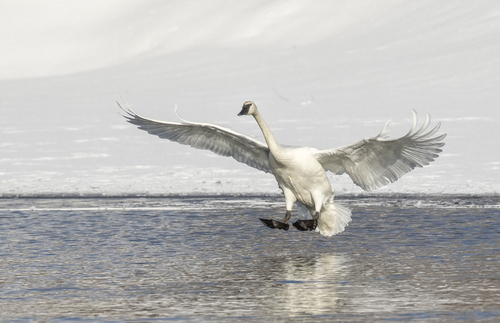 When to Go: Summer
When to Go: Summer
Nearly 60 species of birds can be spotted in Grand Teton National Park in Wyoming, one of the best places in North America for wildlife viewing of any kind. For serious birdwatching, plan to spend multiple days, as each of the park’s many habitats is home to its own unique set of bird species. Jays, nuthatches, sparrows, thrushes, and chickadees are some of the birds most commonly spotted here, while the most exciting find is probably the endangered trumpeter swan (pictured), which breeds each year in Grand Teton National Park.
Gwaii Haanas National Park Reserve, British Columbia
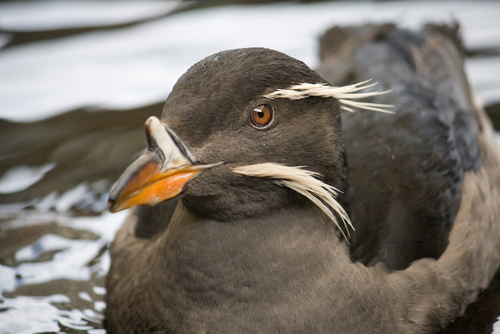
When to Go: Spring and Fall
Located 130 miles off the coast of mainland British Columbia, Gwaii Haanas National Park Reserve, which includes the National Marine Conservation Area Reserve and Haida Heritage Site, is perfectly situated as a resting spot for migrating birds in both the spring and fall. This makes the protected island a must-visit destination for anyone intent on seeing birds in a completely natural environment. About 1.5 million individual birds stop here each season from a long list of species that includes Cassin’s auklet, American black oystercatcher, common murre, bald eagle, various types of falcons, pelagic cormorant, tufted puffin, rhinoceros auklet (pictured), and pigeon guillemot, among many others.
Hawk Mountain Sanctuary, Pennsylvania
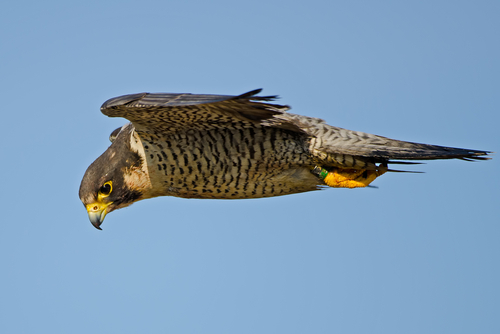
When to Go: Late August through November
For those who love birds of prey, the aptly named Hawk Mountain Sanctuary in Kempton, Pennsylvania is a must-visit. The sanctuary’s location makes for a convenient stop along a number of migration paths, and between the months of August and November, Hawk Mountain is practically swarmed with various types of eagles, hawks, and falcons (pictured). The sanctuary is easy to navigate, too, with walking paths leading throughout for easy viewing.
Mingan Archipelago National Park Reserve, Quebec
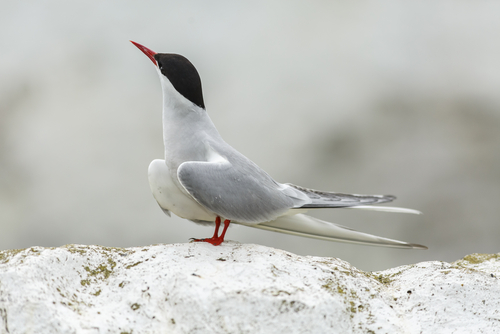
When to Go: Spring
Located way up north, above the 30th parallel is Mingan Archipelago National Park Reserve. Belonging to the Innu band of Ekuanitshit, the reserve boasts more than a thousand small islands and islets, along with more than 200 species of birds — many of which are migratory. Common sightings include common eiders and razorbills, plus the largest colony of Arctic terns (pictured) in the Gulf of St. Lawrence and the westernmost colony of Atlantic puffins in this region.
Nome, Alaska
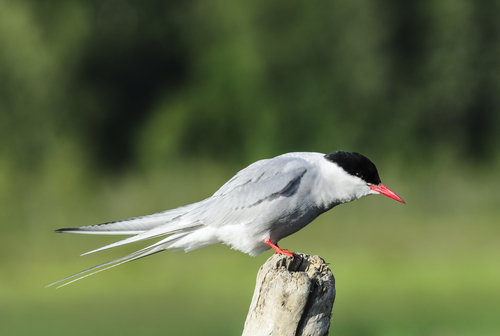
When to Go: Late May to June
Their colors, shapes, and sizes may vary dramatically, but there’s at least one thing a Pacific golden plover has in common with a red-throated loon: both types of birds love Nome, Alaska! And so do bird watchers! Gaining access to likely viewing spots is as simple as driving along the three roads which run through town. For the easiest viewing, travel along Teller Road, where Pacific golden plovers are frequently spotted. If you have more time (the bird watchers we asked recommend at least four days in Nome) or are up for a challenge, head to Kougarok and keep your eyes peeled for bluethroats. Other birds commonly spotted in Nome include mergansers, red-necked phalaropes, red-necked grebes, red-throated loons, arctic terns (pictured), and bristle-thighed curlews, among hundreds of others.
Oak Hammock Marsh, Manitoba
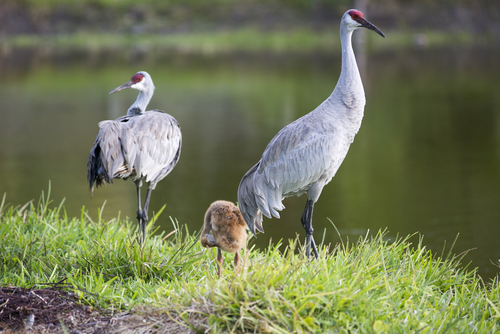
When to Go: September and October
Located 30 minutes north of Winnipeg, Oak Hammock Marsh is a man-made lake and marsh that has become an important sanctuary for various nesting birds. More than 105 nesting types of birds take advantage of the marsh’s pristine habitat, including Hudsonian godwits and northern phalaropes. Though birds can be spotted here throughout the year from the marsh’s three main walking paths, we recommend visiting in late September or early October, when thousands of ducks and sandhill cranes (pictured) stop here to rest.
Olympic National Park, Washington
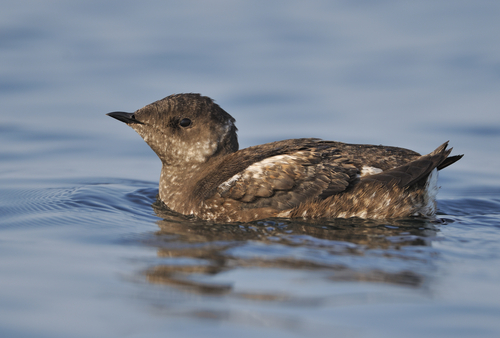
When to Go: Year Round
Washington’s Olympic National Park is a top birding destination thanks to the way its area is separated into four unique habitats. Bird watchers hoping to catch sight of as many birds as possible should plan to spend at least four days in the park — enough time to properly explore the seashore, rainforest, alpine vistas, and old-growth forests. Some of the most exciting birds frequently spotted at Olympic include bald eagles, red-breasted sapsuckers, and marbled murrelets (pictured), the latter of which is endangered.
Point Pelee National Park, Ontario
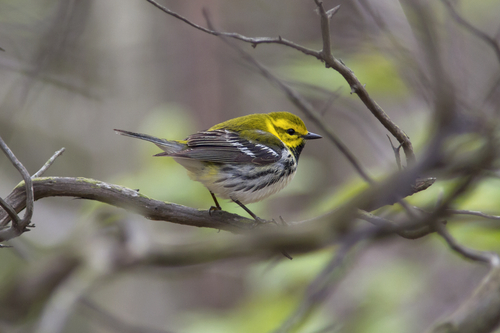
When to Go: Spring and Fall
Head to Point Pelee National Park in Ontario, Canada during either the summer or fall, when more than 380 bird species can be spotted. Of those nearly 400 types of birds, the warbler (pictured) is perhaps the park’s most famous, and in fact, Point Pelee National Park has become known as the “warbler capital of Canada.” Point Pelee has often been named one of the 15 best spots in North America for birding by Birder’s World Magazine.
Reifel Bird Sanctuary, British Columbia
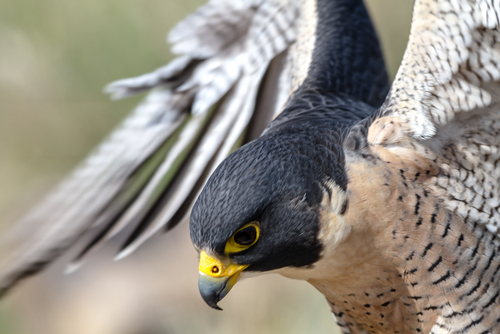
When to Go: October through Early December
During migration — that is, from October through early December — is the best time to visit the Reifel Bird Sanctuary on Canada’s west coast. Due to its situation as a convenient stopover spot on a variety of migration paths, this unique and popular sanctuary temporarily hosts birds from North America, South America, and even Asia. No wonder it’s so often referred to by passionate birders as one of the best places in North America for bird watching! Millions of birds can be viewed here, some of the most exciting of which include trumpeter swans, barn owls, bald eagles, cinnamon teals, peregrine falcons (pictured), and sharp-tailed sandpipers.
Rio Lagartos, Yucatan
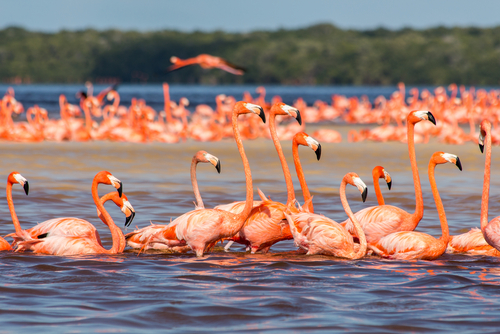
When to Go: April
Rio Lagartos may translate to “alligator river,” but most visitors to this beautiful natural location are here to see the birds, specifically, the flamingos. Every April, thousands of pink flamingos make their way to this coastal inlet in order to safely nest. The flamingos are a big deal, and draw quite the international crowd during the spring. But even if you can’t make it to the Yucatan during April, Rio Lagartos is still worth a visit, as year-round residents include nearly 400 other species of birds.
San Blas, Nayarit
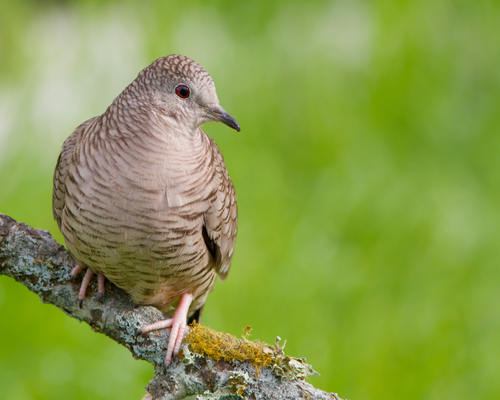
When to Go: Winter
The environment around the municipality of San Blas, located in Nayarit, Mexico, contains a whopping seven unique ecosystems. No wonder it’s considered by many serious birdwatchers to be one of the best places in North America for birdwatching! About 250 of Mexico’s endemic birds call San Blas home, while during the winter months, 80% of the local bird population is made of up migratory birds from all over North America. For this reason alone, it’s a must-visit birding destination. Common sightings include Inca doves (pictured), northern potoos, various flycatchers, various kingfishers, yellow-winger caciques, lineated woodpeckers, Mexican wood nymphs, and western meadowlarks, to name but a few.
Terra Nova National Park, Newfoundland & Labrador
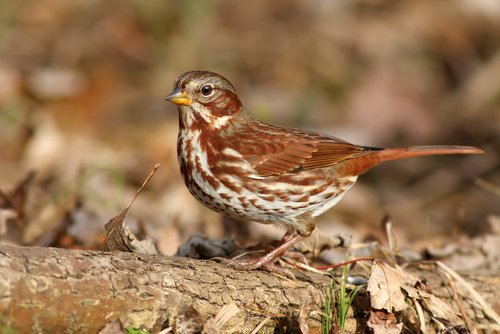
When to Go: Year Round
Terra Nova National Park consists of a unique island boreal forest, and therefore, an impressive number of boreal-dwelling birds. Regardless of the time of year you choose to visit Terra Nova National Park, you’ll likely spot such gems as black-capped chickadees, pine siskins, golden-crowned kinglets, juncos, white-winged crossbills, and various types of woodpeckers. Occasionally, bird types more commonly seen in the United States are spotted in Terra Nova after inclement weather blows them to this region. Come spring time, the national park gains a renewed energy with the presence of such migratory birds as the olive-sided flycatcher, fox sparrow (pictured), magnolia warbler, and white-throated sparrow, among others. The park also includes two bird sanctuaries where terns, yellowlegs, ducks, and bald eagles are protected.
Tule Lake, California
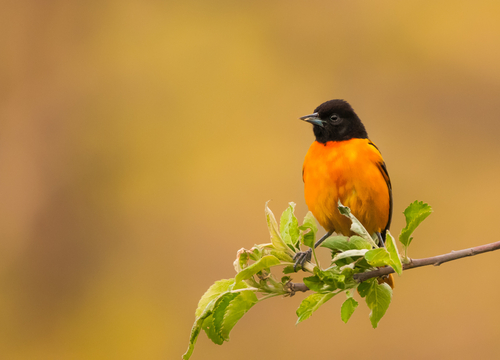
When to Go: Winter
If you like photographing birds, then there may be no better place in North America than the wildlife refuge that is Tule Lake, California. This unique environment is one of the most important resting spots on the Pacific Flyway, and a whopping 500 bird species can be found here. To get as close as possible to the birds, consider reserving one of the many photography blinds available throughout the massive refuge. Pelicans, terns, gulls, ducks, egrets, orioles (pictured), and warblers are just some of the many birds that can be found in Tule Lake year round. However, we recommend taking your camera out to Tule Lake during the winter, when hundreds of bald eagles make it their home for the season.
Waterton Lakes National Park, Alberta
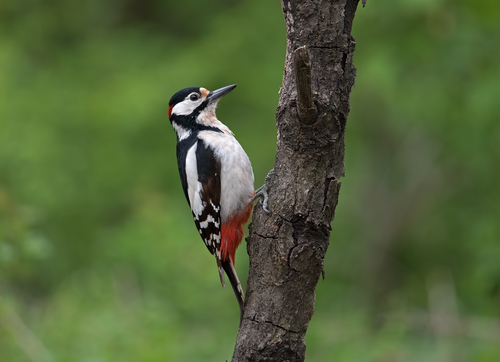
When to Go: Spring and Winter
Participating in an annual bird count is a must-do for any birding enthusiast. Not only is it a great way to see birds, it’s also very important for the bird community as a whole. Waterton Lakes National Park in Alberta, Canada happens to be one of the best places to participate in such a count. The park has been a counting ground for more than 100 years, and each spring and winter, hundreds of birders and ornithologists scout the park via foot, truck, or ski in order to spot as many birds as possible. Of course, one need not participate in the count — or even visit during spring and winter — in order to enjoy all that Waterton Lakes has to offer bird watchers. The park’s various habitats are home to more than 250 bird species, including hummingbirds, jays, warblers, woodpeckers, sandhill cranes, and more.
Wood Buffalo National Park, Alberta and Northwest Territories
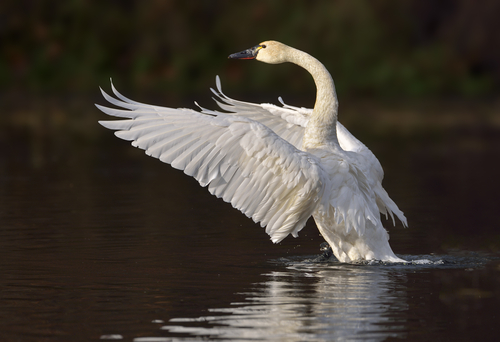
When to Go: Spring and Fall
There is plenty of wildlife to enjoy at Wood Buffalo National Park — Canada’s largest national park and the second largest park in the world (the whole place is bigger than Switzerland). This includes hundreds of different bird species, including tundra swan (pictured), snow geese, snow buntings, various types of grebes, horned larks, American coots, Lapland longspurs, phalaropes, and American avocets, among dozens of others. Wood Buffalo National Park, a UNESCO World Heritage site, also happens to be a chosen nesting area for the only migrating whooping cranes left in the world.

